Search Results for: Community
19
May
A Different Kind of Leader
- By Vision Synergy
The network leader is one of the fastest-emerging and most critical leadership roles in ministry and mission today. Networks — not agencies — are now shaping highly important mission and ministry strategies. Networks and their consultations are fast becoming the main gathering points for Christian leaders from around the the city to around the world. In them, Christians connect, share information and resources, establish standards, and collaborate with one another for greater impact.
We must understand the distinctive role of the network leader who leads these relatively new forms of organizing. This role sometimes goes by other terms — network facilitator, system leader, association or alliance leader, network coordinator — but this article will use the broad term of network leader.
Networks are not institutions
“Networks are not institutions, they cannot be expected to do what institutions do,” says A.K. Bernard. Nor can networks be led as if they were organizations or institutions. In fact, networks and partnerships operate so differently from traditional organizations that they can easily fail if traditional leadership strategies are used. These differences drive the need for a different kind of collaborative leader with unique skills and ways of working.
Many ministry leaders newly assuming collaborative leadership roles discover they are ill-equipped to lead a complex network. They have never had training or experience facilitating a large set of organizations as it develops commonly-shared goals resulting in significant action. Additionally, many have not received mentoring, coaching or advising from experienced network leaders.
Recognizing the Gap
Today’s increased demand for networks has uncovered a deep gap in training, mentoring and coaching for people who want to develop enduring and effective mission networks. These differences demand a different kind of collaborative leader with specialized skills for “the network way of working,” as the Network Leadership Training Academy terms it.
Perhaps it is not obvious to traditional leaders that interorganizational leadership calls for a new set of skills and approaches. An organizational leader, we often assume, ought to easily transition to leading a network of organizations. But the reality is often very disconcerting as they realize that interorganizational leadership calls for a different set of skills and approaches. “Many organizations are finding it challenging to adopt a network approach to leadership, and leadership programs are not supporting organizational leaders to develop those skill sets,” says network analyst Claire Reinelt.
13
Apr
A Reason for Optimism
- By Vision Synergy
Editor’s Note: This article is excerpted from a cover story by visionSynergy CEO, Kären Butler Primuth, in Mission Frontiers magazine, Mar-Apr 2017 issue. The issue includes many other powerful articles on collaboration!
God is now uniting the worldwide Church like never before to reach the unreached.
Over the past several decades, an increasingly interconnected and globalized world has given rise to hundreds of networks in every field of mission. Through these networks, ministries around the world are meeting, sharing information and resources, and collectively working together to respond to some of the greatest challenges and opportunities of our day. These mission networks are now playing a vital role in shaping Great Commission strategies and the future of the world mission movement.
Networks in Every Field of Mission
The landscape of mission networks today is staggering. There are hundreds of networks around the world covering a wide variety of mission fields at global, regional, national, and local levels. Each network draws together dozens if not hundreds of individuals and organizations around common areas of interest – whether that is a focus on particular geographic areas, people groups, mission strategies, or other issues.
The resource website Linking Global Voices currently tracks more than 500 different networks around the world. And many of these networks have sub-networks within them!
The Lausanne Movement, as one example, is organized around 12 geographic networks and an array of 37 separate global issue networks – from the Buddhist World to Business As Mission, from Diasporas to Disability Concerns, from Leadership Development to Least Evangelized Peoples.
Some mission networks function primarily for information sharing, while others are highly participatory, with members contributing resources toward collaborative projects and commonly-defined goals. A growing number of churches, ministries, and mission organizations see their participation in networks as essential to making informed decisions and fulfilling their own calling.
Four Positive Trends
There may still be thousands of mission groups and hundreds of thousands of local churches around the world who continue to go it alone in their ministry fields. Nevertheless, the good news is that collaboration is gradually becoming the default approach to ministry – from international mission agencies working together among the unreached to local churches working together in their communities.
There are four positive trends that point to a tectonic shift toward collaborative networks in the global mission community.
1. Increasing awareness of networks
There is a growing awareness of and openness to networks and partnerships among churches, ministries, and mission organizations around the world.
2. Donors investing directly in partnerships
The mission funding community is shifting more of their kingdom investments toward projects initiated by networks and partnerships. Many major donors now explicitly ask grantees how they are working in partnership with others to accomplish the goals of their project proposals.
3. Inter-network cooperation
Many networks share common operational challenges. Increasingly, representatives of multiple networks are coming together to share knowledge and address issues particular to multilateral mission networks such as information security and regionalization.
4. Collaboration-friendly organizations
There are thousands of churches and mission organizations which participate in networks around the world. The same individuals or organizations are often involved in multiple networks. The growing number of these collaboration-friendly organizations is a tremendous sign that the mission community is shifting to a new future.
As you explore and engage more deeply in mission networks, I am sure you will become convinced as I am that Christians are called to work together and that partnership is the single best strategy for addressing the most pressing needs in the world today. Collaboration is the key that reduces the duplication of our efforts, maximizes the impact of our ministries, and strengthens the credibility of our witness for Christ.
To read the full article, go to: http://www.missionfrontiers.org/issue/article/how-networks-are-shaping-the-future-of-world-mission
20
Dec
Our latest thoughts and work
- By Vision Synergy
Over the last year, we’ve focused our creative efforts on building and facilitating an online community of collaborative leaders. You are invited to join at Synergy Commons! We will continue to share thought-leadership articles on that site instead of this blog. And, even better, we engage and feature other practitioners of partnerships and networks from across the world.
If you’re interested in our latest projects, events, and news, be sure to follow us on Twitter. We retweet our staff, some ministry and resource partners, and share announcements about new visionSynergy resources and activities.
We pray 2016 was a great year for you and your organization. Together we can do more than apart!
29
Oct
What is your collaboration quotient?
- By Vision Synergy

Networks and partnerships are the future of world mission.
Nothing significant will happen among the unreached without greater collaboration among Christian leaders, churches, and mission organizations.
I recently learned about an unusual mathematician who can teach us a lot about the value of collaboration.
His name is Paul Erdős (1913-1996).
22
Oct
Tree of Life partnership training for oral cultures now available in Amharic
- By Vision Synergy
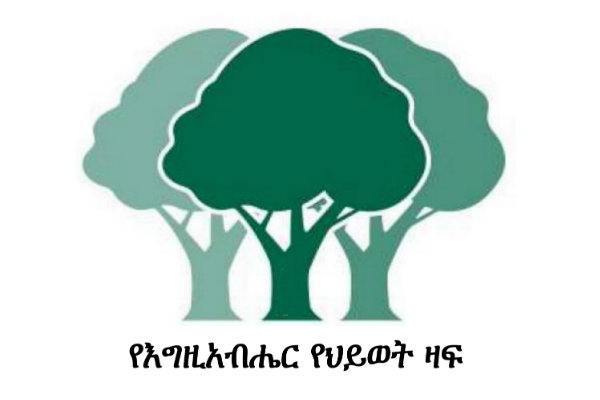
The Tree of Life (TOL) partnership training has recently been translated into the Amharic language of Ethiopia and is now available for free download.
With the Amharic translation, TOL is now available in 8 languages: English, Amharic, French, Hindi, Punjabi, Marathi, Odia, and Nepali.
Tree of Life was originally developed several years ago in partnership with Scriptures in Use and the Bridges Training Network South Asia. At the time, there was little partnership training material that would be appropriate for use among the grassroots oral culture churches in the villages of North India and Nepal.
TOL was developed to provide a Biblical foundation for partnership and practical principles that leaders of local village churches could apply as they worked together in evangelism and church planting, economic development, community and social development, and social justice projects. The TOL training format was designed to be easily replicated by participants in their home villages.
In the past five years, nearly 3,000 leaders have participated in TOL trainings in South Asia. Today, hundreds of oral Bible churches are working together to transform their communities through partnership.
After demonstrated success in South Asia, the Tree of Life training and partnership development program is now expanding to Africa.
Visit our media library to download the Tree of Life partnership training in all available languages.
08
Oct
What can you learn from a boardgame?
- By Vision Synergy

The island was sinking.
Most of my team were separated from each other, trapped, surrounded by rising water.
Our diver was equipped to get to the exit point, but our helicopter was down, so there was little chance the rest of our team would make it.
The good news?
It was only a game.
02
Oct
Simultaneous Vision
- By Vision Synergy

Has God given you a dream to achieve? a vision to fulfill? a cause to conquer? a burden for breakthrough in some area of ministry?
Take a look around.
You are likely to find many others who share the same passion. Time and time again, we have seen that the dreams stirring in one person’s heart are the same dreams stirring in another person’s heart.
That is what missional partnerships are all about.
Whether your ministry context is a neighborhood or a nation, mission partnerships are born when the vision is too big, too complex, or requires resources too great for any individual or single ministry.
Vision is the driving force that shapes a partnership. Partnerships are not first and foremost about structure, or money, or theological statements. Partnerships are first and foremost about vision.
The phenomenon of multiples
We often think of great ideas, big dreams, and powerful visions as something rare and unique. But in reality, they are all around us. If we really start listening and looking around, we often find that multiple people have exactly the SAME vision, at the SAME time, in the SAME place.
It’s not a singular vision. It’s a simultaneous vision.
16
Sep
Tree of Life partnership training for oral cultures now available in 7 languages
- By Vision Synergy

The Tree of Life (TOL) partnership training has recently been translated into the Oriya/Odia language of East India and is now available for free download.
With the Odia translation, TOL is now available in 7 languages: English, French, Hindi, Punjabi, Marathi, Odia, Nepali.
Tree of Life was originally developed several years ago in partnership with Scriptures in Use and the Bridges Training Network South Asia. At the time, there was little partnership training material that would be appropriate for use among the grassroots oral culture churches in the villages of North India and Nepal.
TOL was developed to provide a Biblical foundation for partnership and practical principles that leaders of local village churches could apply as they worked together in evangelism and church planting, economic development, community and social development, and social justice projects. The TOL training format was designed to be easily replicated by participants in their home villages.
In the past five years, nearly 3,000 leaders have participated in TOL trainings in South Asia. Today, hundreds of oral Bible churches are working together to transform their communities through partnership.
After demonstrated success in South Asia, the Tree of Life training program is now expanding to Africa. A new translation into Amharic for Ethiopia is underway.
Visit our media library to download the Tree of Life partnership training in all available languages
To learn more about the Tree of Life partnership training, check out this article by Joe Handley of Asian Access:
Partnership Training For Oral Cultures (Orality Journal, 2014)
Archived version: http://www.webcitation.org/6SdteQ6Xr
20
Aug
Collaboration for the Common Good
- By Vision Synergy

I was recently on an early morning trip to the airport for a flight overseas. In my city, the road to the airport crosses a bridge over a large lake. After crossing the bridge, I heard an ambulance siren coming up behind the rear of my car. Along with other drivers I pulled over and said a prayer for whoever was inside the ambulance.
Moments later I began thinking: Nobody really likes paying taxes, but we surely value – and rely on – many of the services that our taxes provide. Whoever picked up the phone early that morning and called emergency services for an ambulance could never have expected a quick response if thousands of other people had not paid the taxes that created the infrastructure to allow that ambulance to arrive.
29
Aug
History & Impact
- By Lucas
- No Comments
VisionSynergy:
High-Impact Networks

In the past few decades, numerous forces have created new challenges and emerging opportunities for Christian mission. Among these forces are the rapid urbanization and globalization of societies, the proliferation of Internet and mobile technologies, and the rise of the Church in the East and the South.
The explosive growth of the Church outside the West had been a dream of missionaries for centuries, and while there is much to celebrate, the realization of that dream has also brought many new challenges for communication and cooperation.
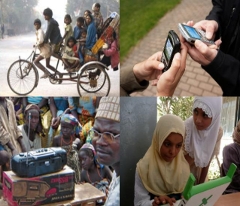 After our founding staff completed nearly 20 years of partnership development, it became clear that there were certain aspects and approaches to world mission that could only be influenced by larger scale networks.
After our founding staff completed nearly 20 years of partnership development, it became clear that there were certain aspects and approaches to world mission that could only be influenced by larger scale networks.
VisionSynergy was founded in 2003 to address this particular need by helping Christian mission organizations around the world catalyze multi-lateral, multi-national networks that could make a significant impact on these critical areas of world mission.
 Since our formation, VisionSynergy has served as a primary advisor to dozens of international networks involving thousands of organizations.
Since our formation, VisionSynergy has served as a primary advisor to dozens of international networks involving thousands of organizations.
Through all our history as an organization, it has been our privilege to work with some of the most amazing ministries on Earth – ministries which are literally changing the world and making history through their involvement in these networks. At the heart of each of these networks is a bold, breakthrough vision. They are working for systemic impacts, not just incremental improvements.
InterDev:
Pioneering Partnership

InterDev’s first partnership meeting – Maestranza Hotel – Málaga, Spain
The VisionSynergy story begins with our predecessor organization, Interdev, and its founder, Phill Butler. In the early 1980’s, Phill launched InterDev with a focus on developing on-the-ground mission partnerships among the “gateway people groups.”
InterDev’s first partnership meeting took place in 1986 in the city of Málaga, Spain and brought together eight ministries working in the North Africa region. Over the next two decades, InterDev would go on to help pioneer the modern partnership movement in Christian mission.
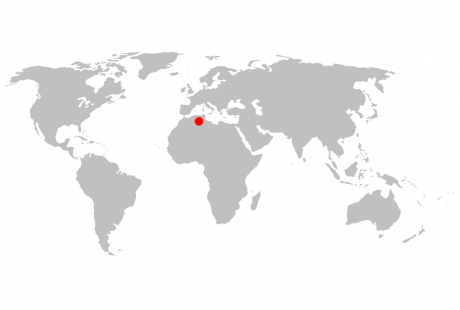 InterDev began in 1986 with one partnership of 8 ministries. By 2002, the work had grown to 92 operating partnerships and 65 developing partnerships involving more than 3000 organizations in 55 countries.
InterDev began in 1986 with one partnership of 8 ministries. By 2002, the work had grown to 92 operating partnerships and 65 developing partnerships involving more than 3000 organizations in 55 countries. 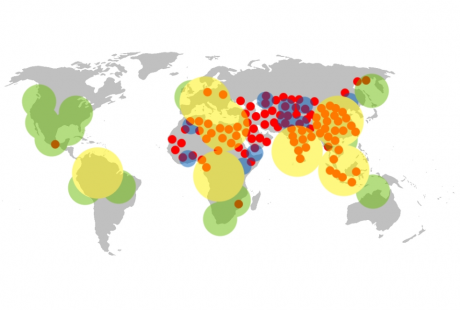 In addition, there were 22 regional consultations and an international training program in 7 languages hosting 35 events a year with nearly 4000 participants in all.
In addition, there were 22 regional consultations and an international training program in 7 languages hosting 35 events a year with nearly 4000 participants in all.
Through all this experience one thing became very clear:
While the contexts and cultures were all very different, the principles powering effective partnerships were always the same.
 The North Africa Story
The North Africa Story
Phill Butler chronicles the challenging formation of an early partnership working in several countries of North Africa. In the past 20 years, major people groups in this region have seen some of the largest movements of Muslims to Christ in history.
 The Mongolia Story
The Mongolia Story
Phill Butler chronicles the formation of a partnership to reach Mongolia. In the early 1980’s there were only a handful of known believers in Mongolia. Today, Mongolia is radically different – sending more Christian missionaries per capita than any other nation.
Impact:
Connecting Ministries,
Changing Missions
While we do not publicly share specific information about the groups we advise or their constituent organizations, here is a “big picture” case highlighting the types of systemic impacts these networks are making in the Middle East and North Africa (MENA). We also have examples available upon request from our previous focus areas: digital and orality ministries.
MENA Ministries
“For such a time as this”
Prepared for change in North Africa
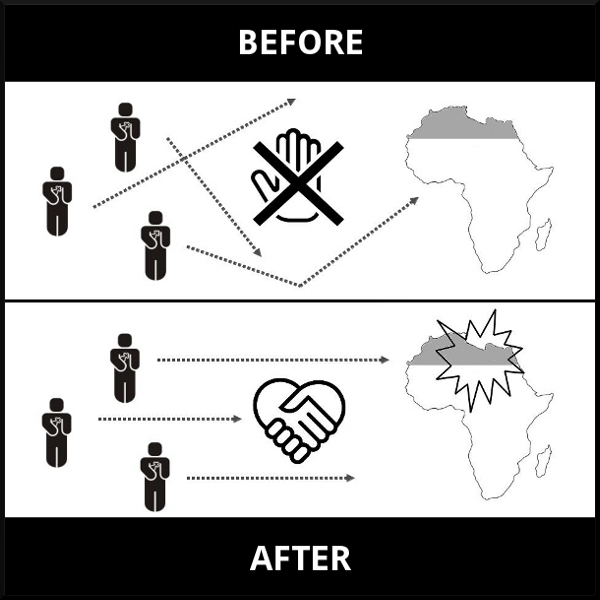
VisionSynergy was instrumental in launching a ministry partnership for a particular North African country that experienced new openness during the “Arab Spring” uprisings. This partnership has made significant advancements including the staffing of feeding stations and refugee camps for thousands of refugees on the border. We helped coordinate a consultation of the partnership where over 70 people from 35 organizations gathered to discuss how to most effectively coordinate the response of the global church as this nation opens its doors for the first time in decades. This partnership is now coordinating efforts focused on prayer, relief and development, follow-up and church-planting, and job placement.
“Who knows whether you have not attained this position for such a time as this?“ (Esther 4:13)
Before … there were only closed doors with very little engagement in this largely unreached part of the world.
But now … because this partnership had already been formed, it was ready to seize the moment and rapidly mobilize in the face of radical changes.
Stories from the field
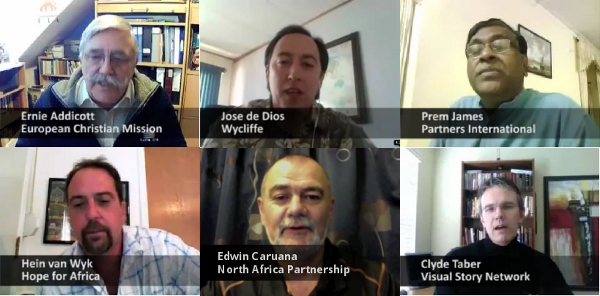
In order to better understand the qualitatively significant outcomes of missional networks and partnerships, we encourage you to watch some of the video stories we have recently begun to collect and curate through our YouTube channel.
These video stories come from hands-on partnership practitioners who have been the catalysts, champions, and coordinators of high-impact networks and partnerships which have collectively made huge strides in the advance of the Gospel around the world.
Nothing speaks like the voice of experience.
Among dozens of short stories, you will learn how collaboration saved millions of dollars in Bible translation costs, how unreached peoples and entire nations have been reached through partnerships, how ministries have shared resources, how hundreds of local churches have worked together to transform their cities, and much more.
Want to leverage the power of partnership?
 We believe that God is always at work around the world, moving His people toward community and collaboration. That’s why we so often find that the dreams stirring in one person’s heart are the same dreams stirring in another person’s heart. If you want to learn more about how to leverage the power of partnership in your own ministry context, or how to get involved in the work of bringing others together to advance the Gospel, contact us!
We believe that God is always at work around the world, moving His people toward community and collaboration. That’s why we so often find that the dreams stirring in one person’s heart are the same dreams stirring in another person’s heart. If you want to learn more about how to leverage the power of partnership in your own ministry context, or how to get involved in the work of bringing others together to advance the Gospel, contact us!


